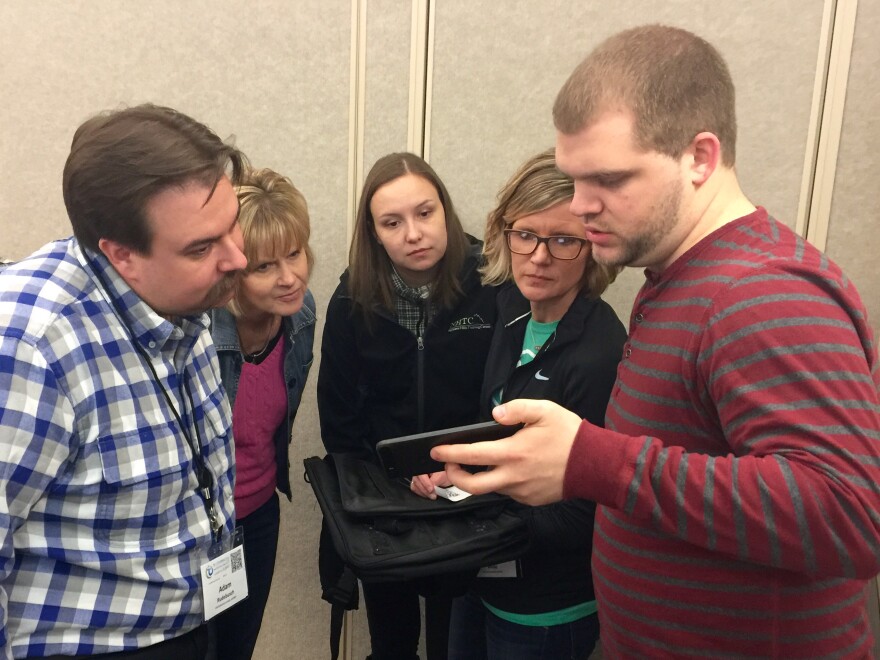Teachers from around South Dakota are collaborating to find new ways to engage students in problem solving. A conference on Technology and Innovation in Education wrapped up this week. One of the dozens of sessions focused on helping students break into a box by thinking outside of it.
Teachers huddle in four different groups around a conference room. Each cluster tries to find the right combination to open a lock and discover what’s inside a container or bag. One group works through English and Language Arts questions to discover the numbers they need. They talk about options and decide on the right answers step-by-step.

They find the right code, spin the numbers on the lock, and celebrate when they discover mini candy bars inside.
"Immediately when I got over here, my heart started pounding faster, because I was like, ‘Oh, I’ve got to figure this out.’ I looked around. Everyone else is competing, so that emotion never goes away," Scott Georgson says.
Georgson teaches at a multi-grade private school in Sioux Falls. He says he sees how breaking into a box can be an effective teaching tool.
"When you look at a worksheet – a four-page worksheet even, a stack of worksheets – you’re going to look at the whole thing and think, ‘Oh, I’m going to have to do all this work.’ But when you’re seeing it step-by-step, you’re just focused in the moment on what’s coming next, and I think that’s really intriguing for kids," Georgson says.
That’s the point – to inspire creativity and critical thinking through student-led motivation.

Presenter Carla Diede is a middle school math teacher in Harrisburg. She says educators in all subjects can incorporate lockbox-type initiatives.
"Kindergarten – they had to count socks and sort them, and that became the code. Science – they had to first do a little hangman quiz thing about the states of matter and then they got the final clue that was the code," Diede says. "Math – if you didn’t see them up here – had UV flashlights. They had to do matching, and then when they looked down it said, 'Check your source.' And on the source was an email address. They emailed it, and it automatically responded back to them their next clue, so there's no limit to what you can do with the clues and the context," Diede says.
Diede says it’s possible to integrate content standards while infusing the classroom with fun.

